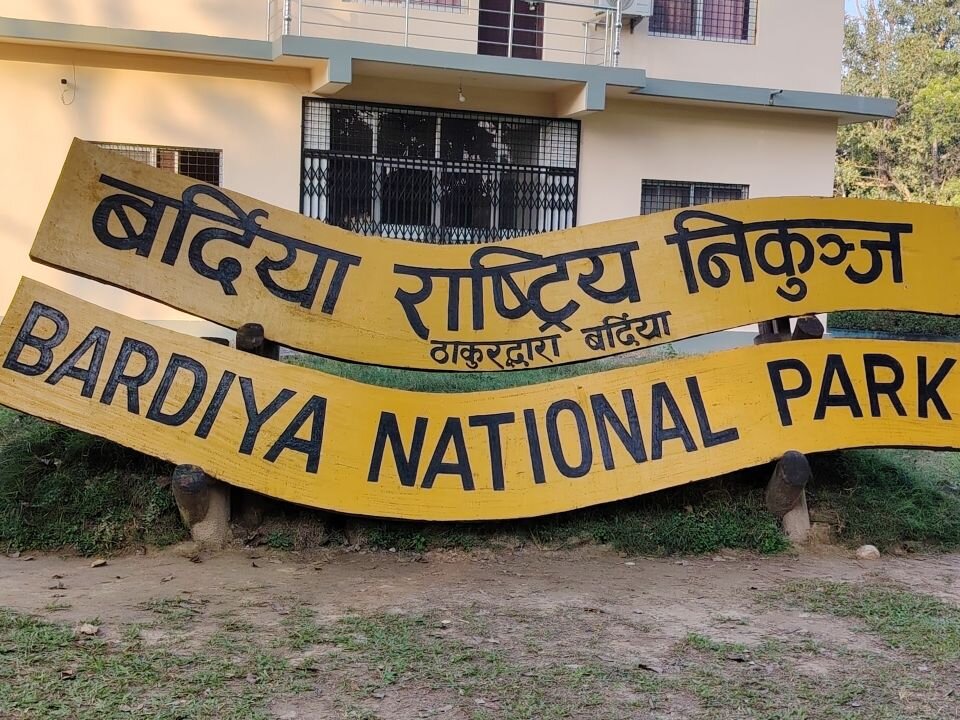Premium Only Content

Bardiya National Park
Bardiya National Park, situated in the western Terai region of Nepal, is one of the country’s most extensive and ecologically diverse protected areas. Covering an area of approximately 968 square kilometers, the park lies in Bardiya District of Lumbini Province and was officially established in 1988. Before its designation as a national park, the area was a royal hunting reserve known as the Bardiya Wildlife Reserve, which was created in 1976. Its transformation into a national park marked a significant milestone in Nepal’s efforts to conserve the rich biodiversity of the lowland Terai ecosystem.
The park is bordered by the Karnali River to the west, while the Babai River flows through its core, creating a mosaic of habitats that support a wide variety of flora and fauna. The landscape is dominated by dense sal (Shorea robusta) forests, interspersed with grasslands, riverine forests, and wetlands. This combination of habitats provides a refuge for some of the most endangered wildlife species in Asia. Bardiya is particularly famous for its population of Royal Bengal tigers, one-horned rhinoceroses, Asian elephants, gharial crocodiles, and Gangetic dolphins. It also shelters more than 400 species of birds, including the great hornbill, lesser adjutant stork, and bengal florican.
In addition to its ecological importance, Bardiya National Park holds significant cultural and social value. The area surrounding the park is home to the Tharu community, an indigenous ethnic group known for their unique traditions, dances, and harmonious relationship with nature. Their traditional lifestyle and knowledge systems contribute to sustainable resource use and help maintain the ecological balance of the region.
Bardiya offers rich opportunities for eco-tourism and wildlife observation, with jungle safaris, rafting on the Karnali River, and birdwatching among the most popular activities. Visitors may also encounter species such as spotted deer, wild boar, swamp deer, blue bull, and various species of monkeys. Despite its natural beauty and abundance of wildlife, Bardiya remains less commercialized than Chitwan National Park, giving visitors a more tranquil and authentic wilderness experience.
Today, Bardiya National Park stands as a symbol of Nepal’s commitment to biodiversity conservation and sustainable development. Through continued efforts in anti-poaching, community involvement, and habitat restoration, the park not only protects rare species but also supports the livelihoods and cultural heritage of local people. It remains a vital part of Nepal’s natural heritage — a sanctuary of life, culture, and beauty where the rhythm of the wild still beats strong.
-
 11:04
11:04
Blackstone Griddles
14 hours agoCountry Fried Steaks on the Blackstone Griddle
58.1K13 -
 LIVE
LIVE
Spartan
18 hours agoFirst playthrough of First Berserker Khazan
812 watching -
 12:22:22
12:22:22
Phyxicx
13 hours agoHappy Halloween! Scary game Visage! Then Waifu Dungeon! - 10/31/2025
21.2K -
 49:47
49:47
Brad Owen Poker
22 hours agoI Get My First BIIGGG Win! $25,000+ Buy-in! HORSE Championship! Don’t Miss! Poker Vlog Ep 324
10.5K1 -
 5:14:08
5:14:08
BBQPenguin_
7 hours agoARC RAIDERS LIVE: High-Stakes Extraction & PvPvE! (First Run)
8.68K1 -
 9:53
9:53
Rethinking the Dollar
22 hours agoWhen Detroit Bleeds, America Suffer! Layoffs Have Begun
14.6K25 -
 18:36
18:36
Clownfish TV
1 day agoYouTube Just NERFED YouTube Gaming... | Clownfish TV
11.3K30 -
 10:26
10:26
Silver Dragons
19 hours agoSilver is TAKING OFF Around the World
11.4K4 -
 1:36
1:36
From Zero → Viral with AI
1 day ago $1.96 earnedAI in Content Creation & Discovery – The New Era of Marketing
20.2K1 -
 1:20:10
1:20:10
FreshandFit
13 hours agoMiami Halloween Street Debate
216K117